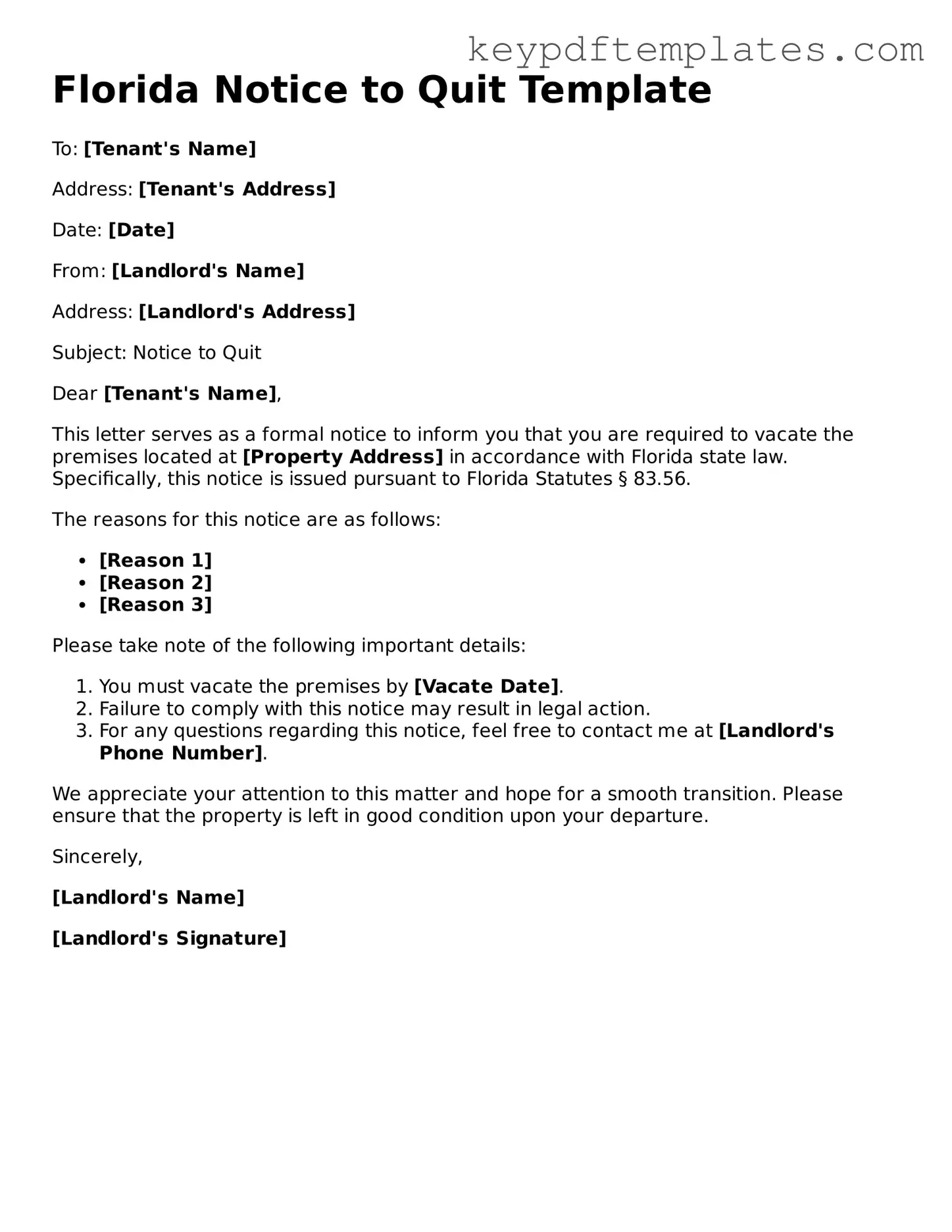Legal Notice to Quit Document for the State of Florida
The Florida Notice to Quit form is a legal document used by landlords to inform tenants that they must vacate the rental property. This form serves as an official notice, outlining the reasons for the eviction and the timeframe in which the tenant must leave. Understanding this form is crucial for both landlords and tenants to navigate the eviction process effectively.
Modify Document Online
